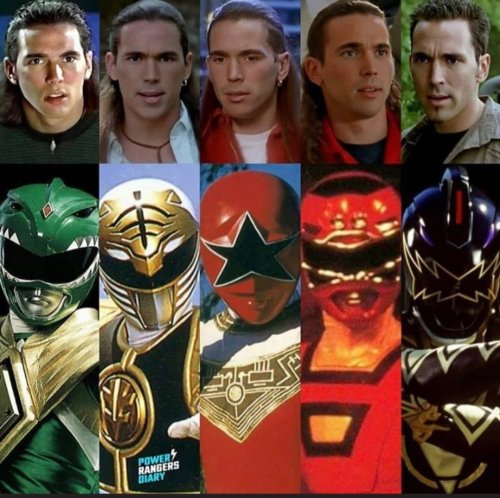Too Good Not To Reblog.
Too good not to reblog.










Mark Hamill’s autographs are hilarious
Part 2 of the autographes: https://bit.ly/3CFiHzc
More Posts from Athenadonovan and Others
R.I.P. Peter.



R.I.P. Peter Mayhew (19 May 1944 – 30 April 2019)
Discovering the Universe Through the Constellation Orion
Do you ever look up at the night sky and get lost in the stars? Maybe while you’re stargazing, you spot some of your favorite constellations. But did you know there’s more to constellations than meets the eye? They’re not just a bunch of imaginary shapes made up of stars — constellations tell us stories about the universe from our perspective on Earth.

What is a constellation?
A constellation is a named pattern of stars that looks like a particular shape. Think of it like connecting the dots. If you join the dots — stars, in this case — and use your imagination, the picture would look like an object, animal, or person. For example, the ancient Greeks believed an arrangement of stars in the sky looked like a giant hunter with a sword attached to his belt, so they named it after a famous hunter in their mythology, Orion. It’s one of the most recognizable constellations in the night sky and can be seen around the world. The easiest way to find Orion is to go outside on a clear night and look for three bright stars close together in an almost-straight line. These three stars represent Orion's belt. Two brighter stars to the north mark his shoulders, and two more to the south represent his feet.

Credit: NASA/STScI
Over time, cultures around the world have had different names and numbers of constellations depending on what people thought they saw. Today, there are 88 officially recognized constellations. Though these constellations are generally based on what we can see with our unaided eyes, scientists have also invented unofficial constellations for objects that can only be seen in gamma rays, the highest-energy form of light.
Perspective is everything
The stars in constellations may look close to each other from our point of view here on Earth, but in space they might be really far apart. For example, Alnitak, the star at the left side of Orion's belt, is about 800 light-years away. Alnilam, the star in the middle of the belt, is about 1,300 light-years away. And Mintaka, the star at the right side of the belt, is about 900 light-years away. Yet they all appear from Earth to have the same brightness. Space is three-dimensional, so if you were looking at the stars that make up the constellation Orion from another part of our galaxy, you might see an entirely different pattern!

The superstars of Orion
Now that we know a little bit more about constellations, let’s talk about the supercool cosmic objects that form them – stars! Though over a dozen stars make up Orion, two take center stage. The red supergiant Betelgeuse (Orion's right shoulder) and blue supergiant Rigel (Orion's left foot) stand out as the brightest members in the constellation.

Credit: Derrick Lim
Betelgeuse is a young star by stellar standards, about 10 million years old, compared to our nearly 5 billion-year-old Sun. The star is so huge that if it replaced the Sun at the center of our solar system, it would extend past the main asteroid belt between Mars and Jupiter! But due to its giant mass, it leads a fast and furious life.

Betelgeuse is destined to end in a supernova blast. Scientists discovered a mysterious dimming of Betelgeuse in late 2019 caused by a traumatic outburst that some believed was a precursor to this cosmic event. Though we don’t know if this incident is directly related to an imminent supernova, there’s a tiny chance it might happen in your lifetime. But don't worry, Betelgeuse is about 550 light-years away, so this event wouldn't be dangerous to us – but it would be a spectacular sight.
Rigel is also a young star, estimated to be 8 million years old. Like Betelgeuse, Rigel is much larger and heavier than our Sun. Its surface is thousands of degrees hotter than Betelgeuse, though, making it shine blue-white rather than red. These colors are even noticeable from Earth. Although Rigel is farther from Earth than Betelgeuse (about 860 light-years away), it is intrinsically brighter than its companion, making it the brightest star in Orion and one of the brightest stars in the night sky.

Credit: Rogelio Bernal Andreo
Buckle up for Orion’s belt
Some dots that make up constellations are actually more than one star, but from a great distance they look like a single object. Remember Mintaka, the star at the far right side of Orion's belt? It is not just a single star, but actually five stars in a complex star system.

Credit: X-ray: NASA/CXC/GSFC/M. Corcoran et al.; Optical: Eckhard Slawik
Sword or a stellar nursery?
Below the three bright stars of Orion’s belt lies his sword, where you can find the famous Orion Nebula. The nebula is only 1,300 light-years away, making it the closest large star-forming region to Earth. Because of its brightness and prominent location just below Orion’s belt, you can actually spot the Orion Nebula from Earth! But with a pair of binoculars, you can get a much more detailed view of the stellar nursery. It’s best visible in January and looks like a fuzzy “star” in the middle of Orion’s sword.

More to discover in constellations
In addition to newborn stars, Orion also has some other awesome cosmic objects hanging around. Scientists have discovered exoplanets, or planets outside of our solar system, orbiting stars there. One of those planets is a giant gas world three times more massive than Jupiter. It’s estimated that on average there is at least one planet for every star in our galaxy. Just think of all the worlds you may be seeing when you look up at the night sky!
It’s also possible that the Orion Nebula might be home to a black hole, making it the closest known black hole to Earth. Though we may never detect it, because no light can escape black holes, making them invisible. However, space telescopes with special instruments can help find black holes. They can observe the behavior of material and stars that are very close to black holes, helping scientists find clues that can lead them closer to discovering some of these most bizarre and fascinating objects in the cosmos.

Next time you go stargazing, remember that there’s more to the constellations than meets the eye. Let them guide you to some of the most incredible and mysterious objects of the cosmos — young stars, brilliant nebulae, new worlds, star systems, and even galaxies!

To keep up with the most recent stellar news, follow NASA Universe on Twitter and Facebook.
Make sure to follow us on Tumblr for your regular dose of space!
Star Trek stats!

Exciting Day!

Update your phones with our #CountdownToMars wallpapers, like this one, today: https://www.nasa.gov/feature/perseverance-mars-rover-wallpaper-images/
It's LANDING DAY for our Perseverance Mars Rover and her mission to search for ancient signs of life on the Red Planet!
Watch LIVE coverage today starting at 2:15pm ET (18:15 UTC):
Make sure to follow us on Tumblr for your regular dose of space: http://nasa.tumblr.com
So cool!
We Found the Universe’s First Type of Molecule

For decades, astronomers searched the cosmos for what is thought to be the first kind of molecule to have formed after the Big Bang. Now, it has finally been found. The molecule is called helium hydride. It’s made of a combination of hydrogen and helium. Astronomers think the molecule appeared more than 13 billion years ago and was the beginning step in the evolution of the universe. Only a few kinds of atoms existed when the universe was very young. Over time, the universe transformed from a primordial soup of simple molecules to the complex place it is today — filled with a seemingly infinite number of planets, stars and galaxies. Using SOFIA, the world’s largest airborne observatory, scientists observed newly formed helium hydride in a planetary nebula 3,000 light-years away. It was the first ever detection of the molecule in the modern universe. Learn more about the discovery:
Helium hydride is created when hydrogen and helium combine.

Since the 1970s, scientists thought planetary nebula NGC 7027—a giant cloud of gas and dust in the constellation Cygnus—had the right environment for helium hydride to exist.

But space telescopes could not pick out its chemical signal from a medley of molecules.

Enter SOFIA, the world’s largest flying observatory!

By pointing the aircraft’s 106-inch telescope at the planetary nebula and using a tool that works like a radio receiver to tune in to the “frequency” of helium hydride, similar to tuning a radio to a favorite station…

…the molecule’s chemical signal came through loud and clear, bringing a decades-long search to a happy end.

SOFIA is a modified Boeing 747SP aircraft that allows astronomers to study the solar system and beyond in ways that are not possible with ground-based telescopes. Find out more about the mission at www.nasa.gov/SOFIA
Make sure to follow us on Tumblr for your regular dose of space: http://nasa.tumblr.com
Yes! Love the thought out behind space travel here.
Thought on science fictional hyperspaces:
So, like a lot of science fiction writers, in a couple of my science fiction settings I explain “fast” interstellar communication and travel by saying it involves sending messages and spacecraft through “hyperspace.” Hyperspace is a sort of “basement” of our universe that messages and ships can pass through; it is more compact than our space, and there is a correspondence between locations in hyperspace and locations in our space. So, a ship can enter hyperspace, travel a few hundred or thousand AU or a light year or something, go back to our space, and be in the Alpha Centauri system. This is possible because hyperspace offers a possible path where e.g. the distance between our solar system and Alpha Centauri is less than 4 light years; hyperspace is a cosmic short-cut. You can send radio messages through the same short-cut, if you stick the right parts of the transmitter and receiver into hyperspace.
So far, so I good, but like a lot of science fiction writers I also prefer to limit hyperspace travel so it’s more-or-less useless for relatively short journeys, e.g. between planets of our solar system within the orbit of Uranus. This is mostly because I like that hard SF stuff where space travel within a solar system is treated relatively realistically and a solar system still feels big. I’m OK with hyperspace for letting my characters get to Tau Ceti in less than twelve years, but when it comes to asteroid mining, space battles, etc., I want that stuff to work more-or-less like it would in real life. Larry Niven had a nice approach for this: just say you can’t enter or exit hyperspace close to a large mass, so e.g. you can’t enter or exit hyperspace within 20 AU of our sun. To travel to Alpha Centauri through hyperspace you have to travel out beyond Sol’s hyper-limit, then go into hyperspace and take the hyperspace short-cut, then exit hyperspace outside Alpha Centauri’s hyper-limit, then travel the rest of the way in our space. A hyper-limit limitation on hyperspace travel works well for me. I’m less satisfied with it as a limitation on hyperspace communication though, and a few days ago I had an idea for that which I like.
It came to me as I was thinking about how hyperspace travel is kind of analogous to being able to travel through the interior of a sphere instead of being limited to travelling on its outer surface. If you have a sphere the size of Earth and you want to get to a point on the exact opposite side of it, if you have to travel along the outer circumference that’s a journey of 40,000 kilometers, but if you could travel in a straight line through the center of the sphere that’s only 12,750 kilometers. Travelling from Sol to Alpha Centauri in our space is analogous to being limited to travelling along the outer circumference of a sphere, making the same journey through hyperspace is analogous to taking a short-cut through the interior of the sphere.
And it occurred to me to mentally pull on one feature of this analogy: a short-cut through the interior of a sphere would be much more useful for long journeys than for short ones. Again, let’s say the sphere is the size of Earth. If you only want to travel one meter, the difference between a path along the outer circumference of the sphere and a short-cut through its interior is very small. A 1 meter path along flat ground is pretty close to being a straight line. On the other hand, if you want to get to the other side of the sphere, the path along the sphere’s outer circumference is more than three times as long as the path through the center of the sphere.
And I had the idea: what if hyperspace works in a way that’s analogous to that? Maybe the distance between, say, Earth and Jupiter is analogous to a 1 meter distance on the surface of the Earth; so small that the shortest possible path through hyperspace is almost as long as the shortest possible path through our space. Then the distance to Alpha Centauri might be more analogous to a journey across a large fraction of Earth’s circumference; it’s big enough that the shortest possible path through our space is orders of magnitude longer than the shortest possible path through hyperspace. The geometry involved is probably a lot less straightforward than spherical geometry to humans, so for short distances the relationship between our space distances and hyperspace distances might even invert; you might have a set-up where 100 light years in our space is 5 light years in hyperspace, 4 light years in our space is 1 light year in hyperspace, and 1 AU in our space is 4 AU in hyperspace.
This might get you a set-up where you can have relatively fast interstellar communication and travel, but within the orbit of Neptune (or equivalent distance) you’re stuck dealing with light lag.
It would also have the interesting effect that hyperspace travel gets faster for longer journeys. A 1 year voyage might take you to Alpha Centauri, a 5 year voyage might take you 100 light years, a 20 year voyage might take you to the other side of the galaxy, a 100 year voyage might take you to a distant galaxy billions of light years away.
He was such a wonderful guy. Always so nice to everyone he interacted with. He was beloved by my family and will be greatly missed. ❤️

Rip Jason David Frank.


The Greatest Power Ranger to have ever lived.
![Inner Lights By Shade [ Twitter | Instagram | DeviantArt ]](https://64.media.tumblr.com/8e899b3e4347f3bc4160510a5654c114/0b6eb3b1366727ef-4e/s500x750/bc303b8c3b7ed1337449d15fadbaa33bc370f564.png)
![Inner Lights By Shade [ Twitter | Instagram | DeviantArt ]](https://64.media.tumblr.com/90c95639c143a9a4506c46cf9b01d5fe/0b6eb3b1366727ef-cc/s500x750/0e2c09921f876c1b9315c196172a4ed19d05a118.png)
Inner Lights by Shade [ Twitter | Instagram | DeviantArt ]
Can. Not. Wait!
Star Trek: Strange New Worlds Uhura Teaser
-
 nadjem-mari liked this · 1 week ago
nadjem-mari liked this · 1 week ago -
 geminis93 liked this · 4 weeks ago
geminis93 liked this · 4 weeks ago -
 fansblogs reblogged this · 1 month ago
fansblogs reblogged this · 1 month ago -
 fansblogs liked this · 1 month ago
fansblogs liked this · 1 month ago -
 kohleileileil reblogged this · 1 month ago
kohleileileil reblogged this · 1 month ago -
 mrrgullible liked this · 1 month ago
mrrgullible liked this · 1 month ago -
 aphoticforest liked this · 1 month ago
aphoticforest liked this · 1 month ago -
 irlsithspawn liked this · 1 month ago
irlsithspawn liked this · 1 month ago -
 maskedhatter reblogged this · 1 month ago
maskedhatter reblogged this · 1 month ago -
 maskedhatter liked this · 1 month ago
maskedhatter liked this · 1 month ago -
 mr-mango-tango reblogged this · 1 month ago
mr-mango-tango reblogged this · 1 month ago -
 mr-mango-tango liked this · 1 month ago
mr-mango-tango liked this · 1 month ago -
 wild-and-fluorescent-adolescent liked this · 1 month ago
wild-and-fluorescent-adolescent liked this · 1 month ago -
 macktrack liked this · 1 month ago
macktrack liked this · 1 month ago -
 corgoship reblogged this · 1 month ago
corgoship reblogged this · 1 month ago -
 dotum liked this · 2 months ago
dotum liked this · 2 months ago -
 cranberrybogmummy reblogged this · 2 months ago
cranberrybogmummy reblogged this · 2 months ago -
 commonblackbird liked this · 3 months ago
commonblackbird liked this · 3 months ago -
 psykotikdragon reblogged this · 3 months ago
psykotikdragon reblogged this · 3 months ago -
 psykotikdragon liked this · 3 months ago
psykotikdragon liked this · 3 months ago -
 ladybessyboo liked this · 3 months ago
ladybessyboo liked this · 3 months ago -
 tinypinkmouse reblogged this · 3 months ago
tinypinkmouse reblogged this · 3 months ago -
 sky-on-blog reblogged this · 3 months ago
sky-on-blog reblogged this · 3 months ago -
 kn96artworks liked this · 3 months ago
kn96artworks liked this · 3 months ago -
 whatthe4355 reblogged this · 3 months ago
whatthe4355 reblogged this · 3 months ago -
 2014federalbudget reblogged this · 3 months ago
2014federalbudget reblogged this · 3 months ago -
 atlas-struggled liked this · 3 months ago
atlas-struggled liked this · 3 months ago -
 polgarawolf1 liked this · 3 months ago
polgarawolf1 liked this · 3 months ago -
 ami-nami-namino reblogged this · 3 months ago
ami-nami-namino reblogged this · 3 months ago -
 always-burningbright liked this · 3 months ago
always-burningbright liked this · 3 months ago -
 unending-niight reblogged this · 3 months ago
unending-niight reblogged this · 3 months ago -
 blackveilblasphemy liked this · 3 months ago
blackveilblasphemy liked this · 3 months ago -
 whayjhey reblogged this · 3 months ago
whayjhey reblogged this · 3 months ago -
 whayjhey liked this · 3 months ago
whayjhey liked this · 3 months ago -
 love-me-some-moose liked this · 3 months ago
love-me-some-moose liked this · 3 months ago -
 gothimonroe liked this · 4 months ago
gothimonroe liked this · 4 months ago -
 sirikenobilegends reblogged this · 4 months ago
sirikenobilegends reblogged this · 4 months ago -
 localflyingfox reblogged this · 4 months ago
localflyingfox reblogged this · 4 months ago -
 localflyingfox liked this · 4 months ago
localflyingfox liked this · 4 months ago -
 sunburntagapanthus reblogged this · 4 months ago
sunburntagapanthus reblogged this · 4 months ago -
 permianbased liked this · 4 months ago
permianbased liked this · 4 months ago -
 sacrificialacid liked this · 4 months ago
sacrificialacid liked this · 4 months ago -
 thecoloredcanvas liked this · 4 months ago
thecoloredcanvas liked this · 4 months ago -
 labsbian2 reblogged this · 4 months ago
labsbian2 reblogged this · 4 months ago -
 marrowdaughter liked this · 4 months ago
marrowdaughter liked this · 4 months ago -
 insincere-engineer reblogged this · 4 months ago
insincere-engineer reblogged this · 4 months ago



